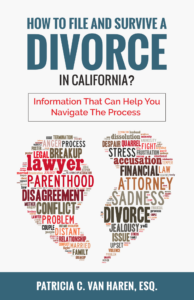
When it comes to divorce in California, there are several options that a couple has to move forward. In some cases, there will be a combination of options that a couple has tried before the divorce comes to an end. If you and your spouse are on speaking terms, it would be best to speak to them and see if you are in agreement as to how the divorce matter should proceed so that you can prepare yourself for the process as well.
Tips on Going Through Divorce in California
Mediation
Mediation is a process where both parties hire a joint neutral third-party to assist them through the divorce process. In mediation, the attorney or mediator is unable to advise either party of their rights, but they will work with both parties to arrive at a resolution that works for them. Often, both parties are encouraged to have their attorney that can review documents or assist them with a parenting plan, support numbers, or property division. If the parties are unable to come to an agreement, the mediator cannot represent either party in the divorce process.
Anything that is said or disclosed in a mediation is confidential. Mediation is not appropriate for cases where there has been domestic violence or where one person exerts total control over their spouse. With mediation, the parties are expected to cooperate with each other and disclose all assets and liabilities and communicate with the mediator effectively.
In some instances where emotions are high because of the circumstances that caused the marriage to dissolve, mediation may be difficult. In these circumstances, it may be best to have the parties attend post-marital counseling so that they can work out emotional issues and incite objective legal decisions in regard to their divorce.
Collaborative Divorce
A collaborative divorce is a team approach to a divorce matter. The team may include therapists, an attorney for each of the spouses, financial planners, CPAs, etc. The goal of collaborative divorce is to create a parenting plan that meets the needs of the children and propose a property division that works for the needs of the family.
In a collaborative divorce, the parties exchange information through an informal discovery process. In the event that there is a business, the parties may jointly retain a forensic accountant to value the business and provide a cash flow analysis for the income that is available for the payment of support. The team will use their unique strengths to assist the couple in coming up with an agreement that works for them. Both parties are actively engaged in this process, and if there is no resolution, neither of the parties may be represented by the attorneys in court.
Negotiation
Negotiation is a hybrid of litigation and mediation. With negotiation, each of the parties generally has an attorney. Although there are circumstances where a spouse may choose to represent themselves and negotiate directly with the attorney for their spouse. In cases where I am the attorney negotiating with an unrepresented spouse, I always advise them to seek their own counsel prior to signing anything. If they do not choose to do so, I will include a waiver that they have been provided that advisement.
The attorneys agree that they will work together and utilize many of the tools provided through a collaborative divorce process, such as informal discovery procedures. However, if they are not able to agree, the attorneys may continue to represent the parties in a divorce. Often the parties and the attorneys will have a four-way settlement meeting towards the end of the case and will work out all the terms of the Judgment during that meeting. Both parties will have the ability to openly discuss the issues that are important to them and the goal is to come up with a Settlement Agreement that is fair and equitable to the parties.
Litigation
Litigation is what most people picture when they think of a divorce. In a litigation case, a judge will make the decisions pertaining to child custody, the division of property, child support, and spousal support. Each side will present the facts as they view them and the law as it relates to their marriage to the court. Therefore, the court will make various rulings based on facts and law. During the process, there can be numerous hearings known as a Request for Orders where interim orders are made pertaining to child custody, support, and payment of expenses. Attorneys and parties are required to present their cases using credible evidence.
Many cases begin as litigation cases, and after some initial hearings, the couple and their attorneys can settle the outstanding issues outside of court. Relatively few family law cases make it all the way to trial. In most circumstances, the costs of the trial in a family law case exceed the potential settlement. There are also instances where a case may start out in mediation and the parties are so far off course that they need to turn to litigation or negotiations with both having their own attorney to guide them through the process.
Each family is different, and the dynamics of spouses vary. Thus, there are some cases that can be easily resolved through mediation or collaborative divorce while others would fare better through negotiation or litigation.

This article has been edited and excerpted from How to File and Survive a Divorce in California (Speakeasy Marketing Inc., 2020) by Patricia C. Van Haren. This book is for anyone who is contemplating divorce or in the divorce process. Patricia gives reliable legal information, guidance, and assistance to readers so that they can get through the divorce process with the least amount of damage.











Add A Comment